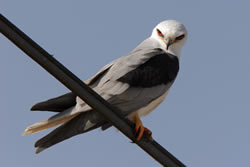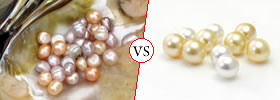Difference between Kite and Eagle
Key Difference: Kites are birds of prey; they tend to be smaller in size and weight less. Eagles are large birds of prey; they are known for their larger size.
 Kites tend to be smaller in size than eagles and weight less. Kites are mostly scavengers and can be recognized by a distinctive V-notch in the tail. Kites are birds of the Milvus, Elanus & Pernus families. They have a long narrow wings and a long narrow, often forked tail.
Kites tend to be smaller in size than eagles and weight less. Kites are mostly scavengers and can be recognized by a distinctive V-notch in the tail. Kites are birds of the Milvus, Elanus & Pernus families. They have a long narrow wings and a long narrow, often forked tail.
Eagles are known for their larger size, powerful build, and  a heavier head and bill. Eagles are considered to be larger than any other birds of prey, except vultures. Eagles tend to be larger in size than kites and weight more. Some species of eagles weigh up to 18 lbs. Eagles are more likely to scavenge and have the ability to prey on larger animals, mainly due to their size. Also, eagles are classified into two different types of categories: land eagles and sea eagles. The latter tend to prefer coastal habitats and prey on fish and other marine life.
a heavier head and bill. Eagles are considered to be larger than any other birds of prey, except vultures. Eagles tend to be larger in size than kites and weight more. Some species of eagles weigh up to 18 lbs. Eagles are more likely to scavenge and have the ability to prey on larger animals, mainly due to their size. Also, eagles are classified into two different types of categories: land eagles and sea eagles. The latter tend to prefer coastal habitats and prey on fish and other marine life.
Comparison between Kite and Eagle:
|
|
Kite |
Eagle |
|
Kingdom |
Animalia |
Animalia |
|
Phylum |
Chordata |
Chordata |
|
Class |
Aves |
Aves |
|
Order |
Falconiformes (Diurnal Raptors) |
Falconiformes (or Accipitriformes, q.v.) |
|
Family |
Accipitridae |
Accipitridae |
|
Species |
Over 20 to 30 species |
Two main groups of eagles: land eagles and sea eagles, or ernes. |
|
Characteristics |
Light gray or white body with black shoulders. Black area around eye, short black hooked beak, red eye, and pointed wings. |
Hooked beaks, curved talons, exceptionally keen eyesight, powerful wings, strong bodies, and feathered legs. |
|
Color |
Colors like black, white, gray, brown, etc. The males have a different color from the female. |
Vary in color: golden, blackish-gray, brown, etc. The bald eagle has a white feathered head and a white tail. Bills are usually light or yellow in color. |
|
Gender differentiation |
Female are usually larger than their male counterparts. |
The female are usually larger than the male. |
|
Feathers |
White or black feathers, forehead, shoulders, lower belly, and leg feathers. Tail is long, white and wedge-shaped. |
The land eagles have legs feathered down to the toes. The sea eagles have legs feathered halfway down to the toes. |
|
Prey |
Varies on species; they are known to snatch foods from other birds. |
Varies on species; includes fish, snakes, medium-sized vertebrate, ground mammals and other birds. |
|
Hunting |
Most of the kites hunt on insects, reptiles, or small mammals, but a large number also scavenge. |
Mostly hunt by day. Most eagles grab prey without landing and take flight with it so the prey can be carried to a perch and torn apart. |
|
Nesting |
They usually start nest building very early. The nest is made from twigs and sticks, line with grass; and built in a tall tree near water. Incubation is carried out by the female, who is fed at the nest by the male. |
Build nests, called eyries, in tall trees or on high cliffs. |
|
Eggs |
Whitish or light blue usually spotted with brown, and number between two to seven. |
Many species lay two whitish eggs. |
|
Hatchings |
Covered with white down with lots of brown spots and a 30 days incubation period. |
Covered with white down, the older, larger chick frequently kills its younger sibling once it has hatched. |
Image Courtesy: bird-friends.com, 2.bp.blogspot.com









Add new comment